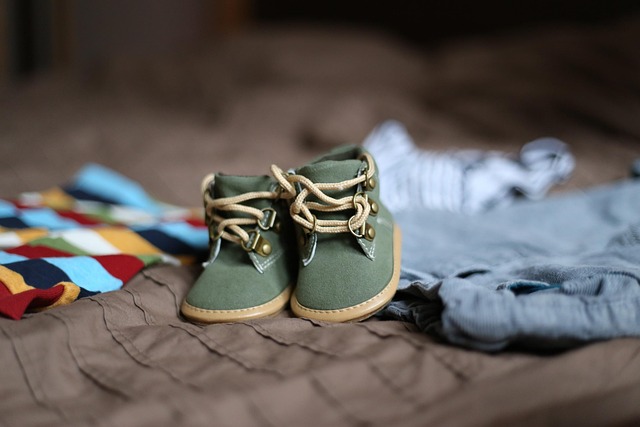Baby Clothes: Practical Guide to Styles, Safety, and Choices
Dressing an infant involves more than picking a cute pattern. Parents and caregivers balance comfort, safety, seasonality, and ease of use while selecting garments for daily care. This guide explains common baby clothing categories, a brief history of how designs evolved, and practical choices for infants, onesies, sleepers, and rompers to help make dressing simpler and safer.

history: how baby clothes evolved
Baby clothing reflects social changes, textile advances, and shifting ideas about childhood. In earlier centuries, infants were commonly dressed in long gowns that allowed easy diapering and washing. As textiles and manufacturing improved in the 19th and 20th centuries, garments became smaller and more varied; distinct sizing, snaps, and stretchy knits appeared. The mid-20th century introduced more gendered styles, while recent decades have emphasized comfort, organic materials, and functional fastenings that make dressing and diaper changes quicker.
infants: sizing and material choices
Choosing the right size and fabric matters because babies grow quickly and have sensitive skin. Many brands size by weight or age ranges rather than strict measurements; it’s normal to move through several sizes in the first year. Natural fibers like cotton and bamboo blends are breathable and less likely to irritate, while knit fabrics with some stretch make dressing and movement easier. For colder weather, layered outfits with a close-fitting base and insulating outer layers work well; in warm climates, single lightweight layers reduce overheating risks.
onesies: design and practicality
Onesies (also called bodysuits) are a common starter piece because they stay tucked and simplify diaper access. Look for onesies with wide neck openings or snap closures at the crotch for easier dressing. Long- and short-sleeve options adapt to seasons; snap placement and fabric weight affect comfort. When selecting onesies, consider seam placement to avoid irritation and check that snaps are secure and free of loose parts. A small wardrobe of versatile onesies reduces outfit changes and keeps laundering manageable.
sleepers: sleepwear safety and fit
Sleepers are designed for overnight comfort and safety. Choose sleepers that fit properly—not too loose to reduce risk of entanglement, and not too tight to restrict movement. For newborns and infants, sleepwear labeled as flame-resistant or snug-fitting according to regional safety standards is recommended. Avoid adding loose blankets in a crib; instead use sleepers appropriate to room temperature or wearable blankets when extra warmth is needed. Always follow care instructions to maintain fabric integrity and fastener function over repeated washes.
rompers: when to choose them
Rompers are one-piece outfits that combine a top and shorts or pants and are useful for daytime wear. They’re convenient for play, outings, and quick changes when they include snaps or zippers at the crotch. Rompers come in both casual knit styles for comfort and more structured fabrics for special occasions. For active infants, choose rompers with flexible waistbands and reinforced seams. Consider sun protection and breathability for outdoor use; lightweight long-sleeve rompers can provide coverage without excess heat.
| Product/Service Name | Provider | Key Features | Cost Estimation |
|---|---|---|---|
| 3-pack Cotton Bodysuits | Gerber | Basic cotton, snap crotch, multiple sizes | $8–$15 per pack |
| Newborn Sleep ‘n Play | Carter’s | Footed sleepers, zippers or snaps, themed prints | $10–$25 each |
| Organic Cotton Bodysuit | Burt’s Bees Baby | Certified organic cotton, soft knit, eco-focused | $8–$20 each |
| Classic Knit Romper | Hanna Andersson | Durable knit, higher price, long-lasting | $20–$40 each |
| Bamboo Rayon Sleepsuit | Kyte Baby | Breathable, thermal-regulating fabric | $20–$35 each |
Prices, rates, or cost estimates mentioned in this article are based on the latest available information but may change over time. Independent research is advised before making financial decisions.
infants: Practical considerations for dressing
Practical dressing balances frequent changes, temperature, and mobility. Opt for outfits with easy fastenings, and keep a small set of essentials—onesies, sleepers, and a romper or two—available in each commonly used size. Stain-resistant and pre-washed fabrics reduce preparation time. For outings, pack an extra onesie, a sleeper or blanket appropriate to the weather, and an extra pair of socks. Inspect garments regularly for loose buttons or worn fasteners and retire items that no longer fasten securely.
Conclusion
Choosing baby clothes is a mix of historical practice, material science, and everyday practicality. Understanding sizing conventions, fabric properties, and garment types such as onesies, sleepers, and rompers helps caregivers make safer, more comfortable choices for infants. Simple priorities—safe fit, breathable fabrics, and functional fastenings—keep dressing straightforward while supporting a baby’s comfort and development.






